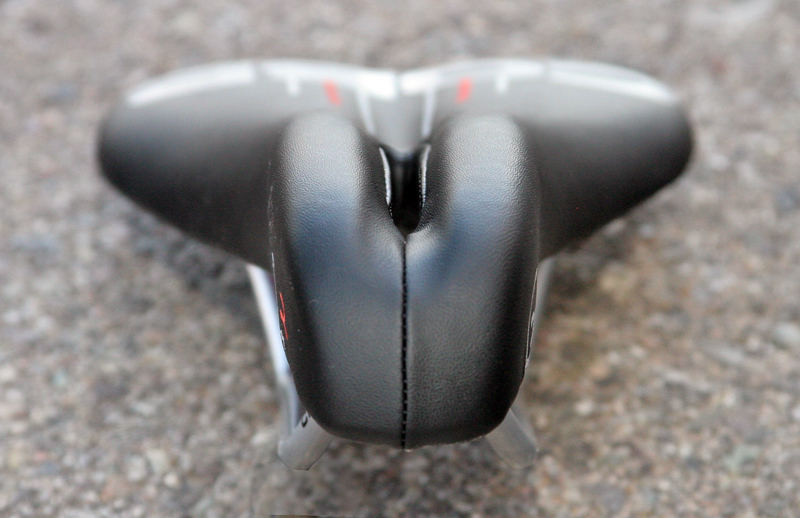By Tom Demerly for TriSports.com
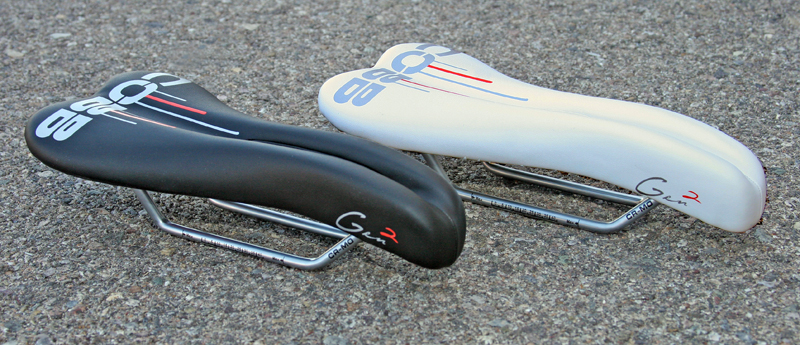
Triathlon saddle evolution has tracked with our understanding and misunderstanding of how we sit on a triathlon and road bike. With the influx of new athletes and better understanding of bike position saddle design has moderated and improved. Riders and bike fitters are finally finding the best way to be positioned for comfort and performance. John Cobb of Cobb Cycling has designed a saddle for that real world best road and triathlon position. Cobb cycling’s new do-everything combined road and triathlon saddle is called the Cobb Cycling Gen 2.
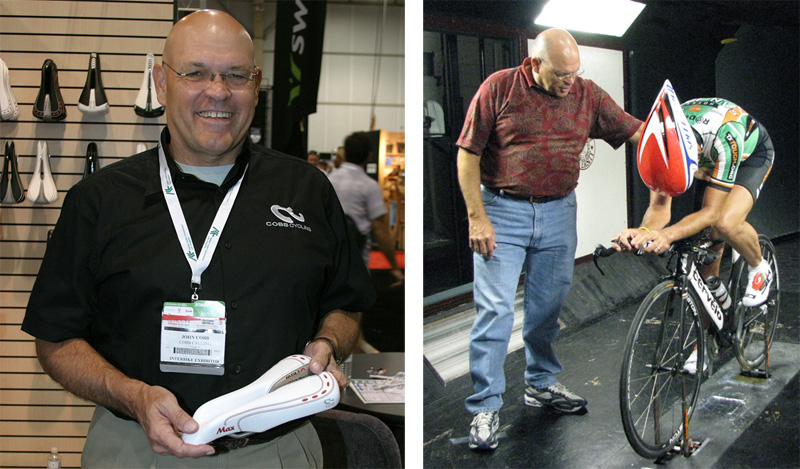
No discussion of a Cobb Cycling saddle is complete without meeting Mr. John Cobb. John is a brilliant, affable man with a penchant for southern charm and good barbecue. His smile is genuine, his handshake firm. Cobb could be regarded as the father of American bicycle fitting. His early work with wind tunnels and bike positions was sought after by many Ironman World Champions and Tour de France Champions. Nearly every significant U.S. Ironman World Champion and Tour de France winner has consulted with John Cobb. Perhaps of greater relevance is Cobb’s work with the “everyman” triathlete. The newbie, the age grouper, the middle of the pack rider. Cobb has fit thousands of them. His work with road and triathlon fitting provide an eclectic level of insight no other fitter can match. Add to that John Cobb’s knowledge of manufacturing within the bike industry and he is uniquely qualified to rethink the bicycle seat. The new Cobb Cycling Gen 2 is the result of that rethinking.
“The Cobb Cycling Gen 2 is designed for how most road and triathlon cyclists actually sit on their bikes”

John Cobb was a part of earlier saddle designs that used two forward protrusions and were shorter at about 25 cm (a standard road cycling saddle is 27 cm). These saddles were shorter to relieve pressure on the nose of the saddle by effectively removing it. This design evolved into the ISM Adamo saddle under different ownership. The ISM Adamo is such a good design, albeit a legacy design, that it remains relevant today with many top pros using it. Especially for riders with substantial saddle to handlebar drop, the ISM Adamo has remained an optimal choice.
Since the development of the ISM Adamo the demographic of triathlon cyclists has expanded and changed, along with our understanding of how to fit bikes for road and triathlon. A new paradigm has emerged, road and triathlon cyclists positioned on road and triathlon bikes in a more functional, practical and more upright position than the top pros. The Cobb Cycling Gen 2 is designed for that rider, a group that likely represents the majority of riders not only at the local triathlon but also high level events like Ironman.
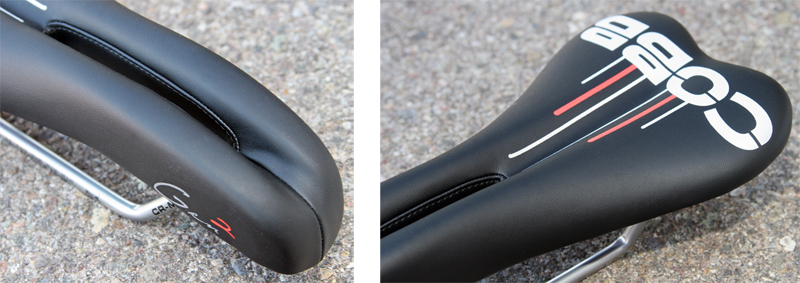
How Can One Saddle Work for Road and Triathlon?
The Cobb Cycling Gen 2 is effectively two saddles: The forward portion of the saddle, where riders will sit during hard efforts in the aero position, mimics the design of tri-specific saddles like the Cobb Cycling Max. There is a distinct relief cut-out and moderate width that transitions to a nearly concave midriff as viewed from above for thigh clearance, another acknowledgement that this saddle is built for people who may not be elite-athlete skinny. The relief cutout section of the saddle is convex as viewed from the side, with a generous amount of dense, high end memory foam. This foam is stiff enough to maintain the open relief section under rider weight, unlike many saddles with cut-outs that actually close up under rider weight.

The rear of the saddle benefits from the forward cutout since it provides ventilation, directing cooling air at speed onto the pad of your trishorts or cycling shorts. In triathlons this speeds the drying of your shorts out of the water. For road cycling this provides relief during long, seated climbs. As viewed from above the rear of the saddle is an ode to classic road saddle design with its support for the ischial tuberosities.
No single saddle shares this combination of nose design and rear configuration optimized for both triathlon and road cycling along with the unique rail design of the Cobb Cycling Gen 2.
The Rest of the Story: Unique Rail Design.
The rails, the two bars under your saddle that the seatpost clamps onto, are one of the most often ignored saddle design areas. Saddle rails act like leaf springs to absorb road shock. The deeper and longer the rails, the better the shock absorption. The rail depth on the Cobb Cycling Gen 2 is among the greatest of any performance saddle in the industry. This provides better shock absorption and vibration reduction than lower profile saddle rails. The benefit of the deep rails is immediately noticeable and especially nice on bad roads.

Cobb Cycling does well to attach a sticker to the Gen 2 saddle reminding you to measure your saddle height carefully before installing the Gen 2 since these rails are much deeper than most other saddles. The total depth of this saddle is approximately 7 cm or 70 millimeters (2.75 inches). If you were to remove your old saddle and install a Cobb Cycling Gen 2 you would inadvertently raise your saddle height since this saddle has greater distance from the bottom of the rails to the top of the saddle. If you own a bike with the seatpost lowered mostly into the seat tube of your frame you may find the Cobb Cycling Gen 2 is too deep for you. This will mostly be the case if a bike frame size is too large for a rider. The overwhelming majority of riders will have more than enough seatpost showing to use the Cobb Saddle easily.

Cobb Cycling has also designed an integrated bottle cage and spares carrying mount sold seperately for use on the Cobb Cycling Gen 2 that bolts to the underside of the saddle using two mount points covered by a brand name plate when you buy the saddle. We haven’t seen the spare carrier but will update this review when it arrives.
The Cobb Cycling Gen 2 does feel different than previous triathlon and road saddles. It is plush and supportive, with the “plushness” coming from the deep rails, not squishy foam that wears our quickly. The profile of the saddle is superb on the nose and feels like any good Italian road saddle at the back with perhaps a little more width. This is a great choice for medium to larger riders due to the supportive rails, high quality foam and overall shape. Smaller riders will benefit from the inward contours to prevent excessive chafing. After riding the saddle the mix of subtle shape and material features, like the higher end foam- something you can’t see from the outside- and the conspicuously deeper rails make this saddle feel very different than any previous saddle design I’ve ridden. It’s wide range of adjustment and versatile design make this a good e-commerce saddle since it is so versatile.

There will never be one saddle that is perfect for every cyclist but the new Cobb Cycling Gen 2 is a significant step forward in saddle design that marries road and triathlon design requirements with unique features like the extra-deep rails for a much nicer ride. This is a new “go to” standard in saddles for the middle 80% or riders and an obvious choice for long distance riders either road or triathlon. The benefit of having one saddle to get accustomed to for both your road bike and your tri bike is worth acknowledging also.
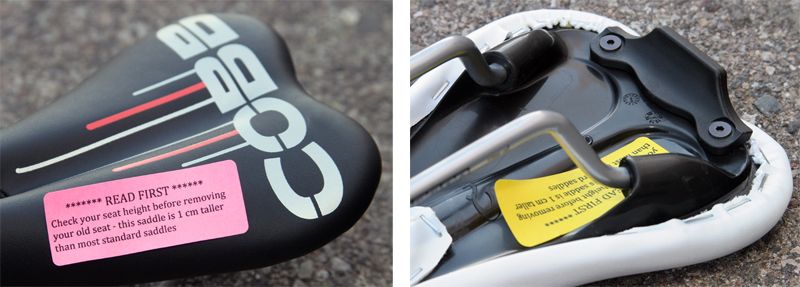
Cobb Cycling got a lot right with the Gen 2 combined road and tri saddle. It is a saddle that only Cobb Cycling could develop given John Cobb’s early work on the Adamo designs and his latter practical experience that lead to the shape, foam density and rail configuration on the Gen 2. Hopefully Cobb Cycling stocked up on the Gen 2’s. While no saddle works for everyone, the Gen 2 will work for more people than any other single saddle I’ve seen so far. That will make demand and sales brisk on this new offering from Cobb Cycling.
